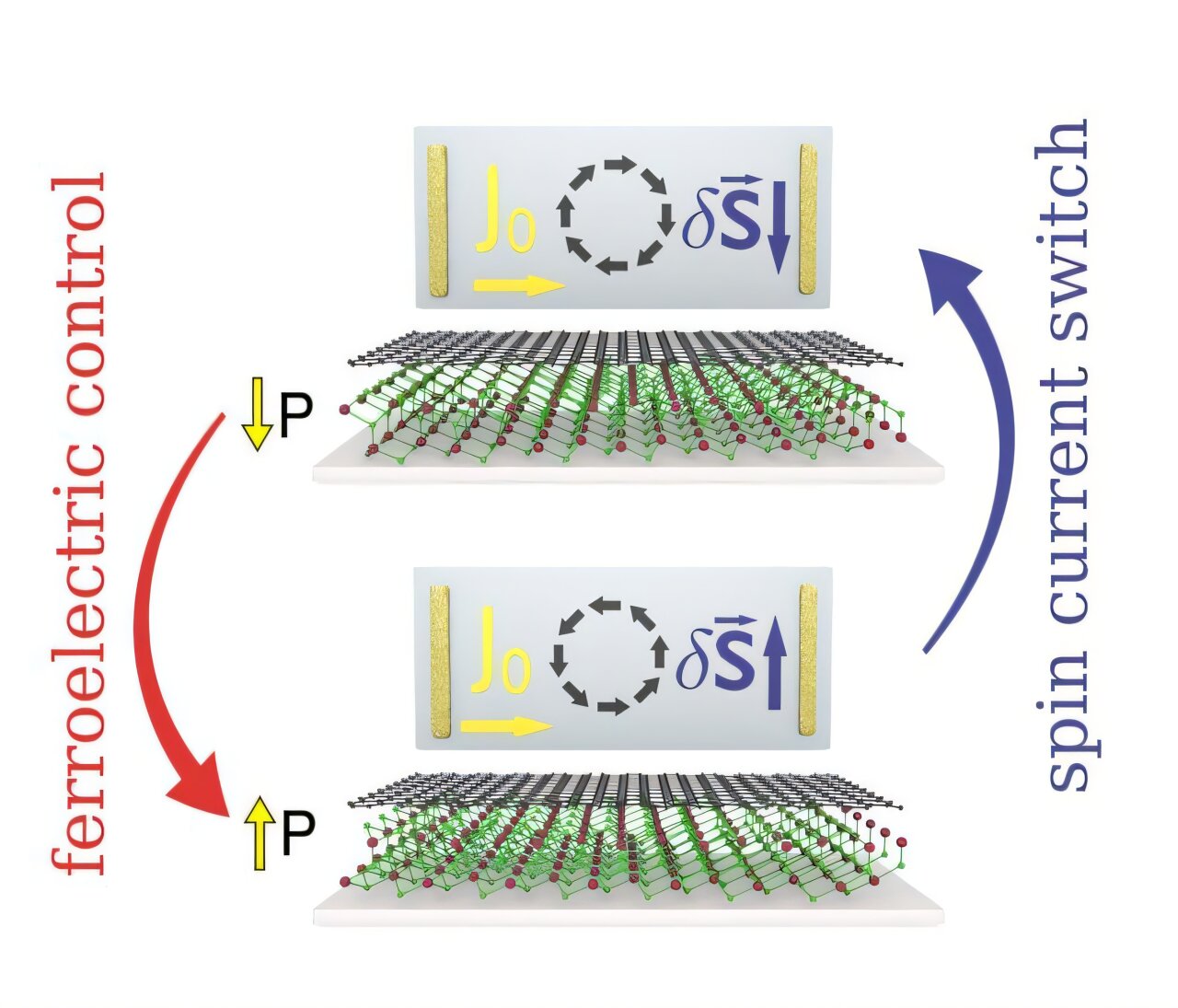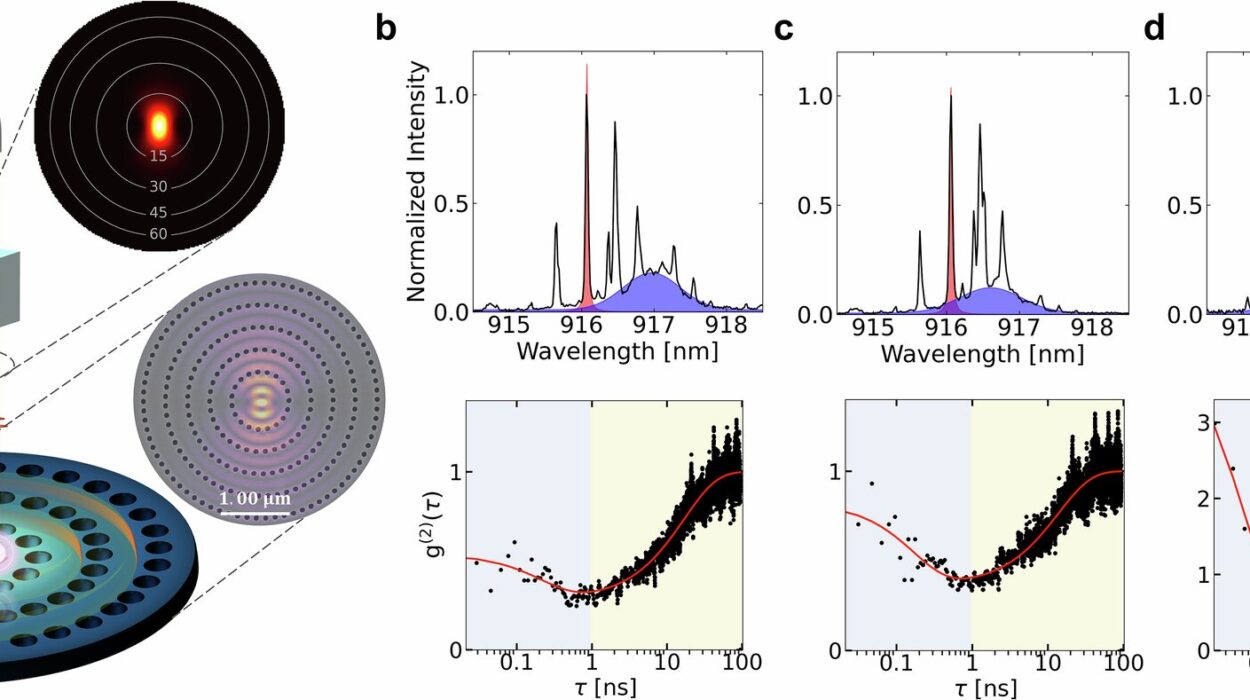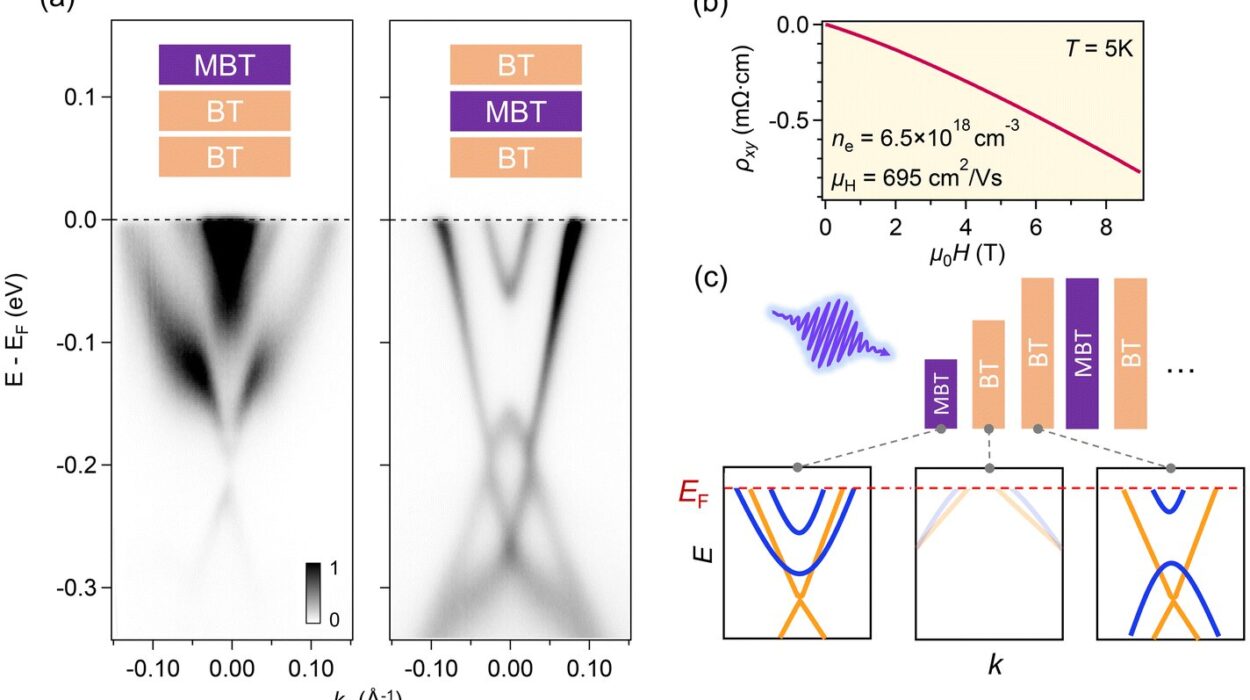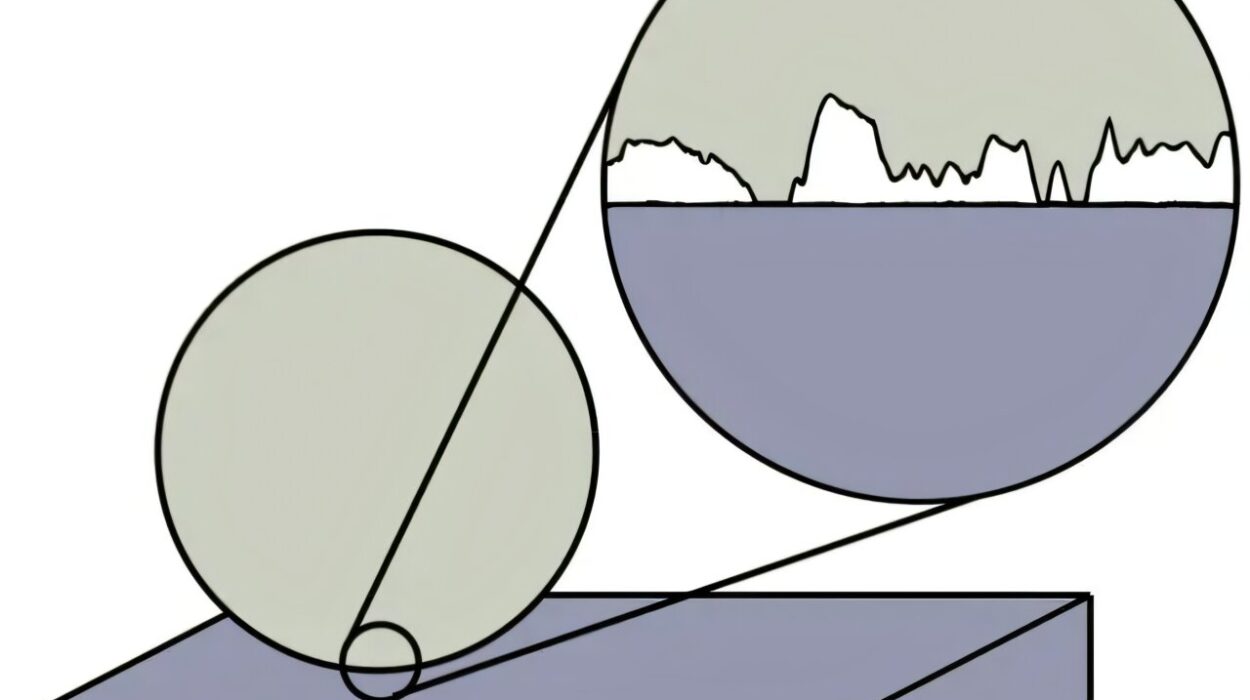A quiet revolution is unfolding at the atomic scale—one that could change how our devices store information, process signals, and manage energy. A collaborative European research team, led by physicists from the Slovak Academy of Sciences, has introduced a powerful new theoretical approach that could reshape the future of spintronics. By coupling graphene with a ferroelectric monolayer of indium selenide (In₂Se₃), the researchers have demonstrated a way to reverse spin currents in graphene using nothing more than an electric field.
Their findings, published in Materials Futures, hint at a world where computers operate faster, consume dramatically less power, and rely on materials just atoms thick. This work blends sophisticated physics with practical technological ambition, revealing how a subtle twist in atomic structure can alter the flow of spins and open the door to new generations of electronic devices.
The Promise and Challenge of Spintronics
Spintronics is built on an elegant idea: instead of relying solely on an electron’s charge to store or transmit information, why not use its spin—its intrinsic, quantum-mechanical form of angular momentum? Spin offers rich potential because it can represent information states without needing continuous electrical current. Devices built on this principle could retain memory without power, drastically reduce heat generation, and switch states at speeds that conventional electronics struggle to match.
Yet the field faces a stubborn limitation. To manipulate spin currents effectively, many devices still depend on external magnetic fields. Magnets, while powerful, complicate device design and restrict energy efficiency and scalability. What scientists long for is a purely electrical method—simple, fast, and low-energy—to control spin orientation.
This is where graphene, the single layer of carbon celebrated for its mechanical strength and extraordinary electronic mobility, enters the picture. Its ability to host spin currents over long distances makes it a prime candidate for spintronics. But even graphene has a weakness: its intrinsic spin-orbit coupling is too weak for robust spin manipulation. To strengthen its capabilities, researchers have turned to the rich possibilities of two-dimensional heterostructures.
The Power of Stacking: Graphene Meets Ferroelectricity
In recent years, stacking 2D materials like Lego bricks—layer by atomically thin layer—has become a powerful way to engineer new electronic properties. When graphene is combined with other van der Waals materials, it can inherit or enhance characteristics that it does not naturally possess.
In this new study, the researchers explored a heterostructure where graphene is placed atop a monolayer of In₂Se₃, a material known for its ferroelectricity. Ferroelectrics have a remarkable trait: they possess a built-in electrical polarization that can be flipped with an external voltage. This directional polarization acts like a tiny internal electric field, capable of subtly modifying the behavior of nearby electronic systems.
In the graphene/In₂Se₃ structure, the ferroelectric polarization breaks inversion symmetry at the interface, strengthening spin-orbit coupling in graphene and enabling electrically controllable spin orientation—something unattainable with graphene alone.
Using first-principles quantum mechanical simulations and tight-binding models, the team showed that simply flipping the polarization direction in In₂Se₃ can reverse the direction of the spin current in graphene. This mechanism turns the heterostructure into an electrical spin switch—nonvolatile, highly energy efficient, and entirely free of magnetic components.
Chirality Switching and Spin Texture Control
The researchers explored two versions of the graphene/In₂Se₃ interface: a perfectly aligned configuration and one with a twist angle of 17.5°. Surprisingly, this slight geometric adjustment had profound effects on how spins behave.
In the aligned structure, the system follows the behavior of the conventional Rashba-Edelstein effect. When a charge current is applied, a perpendicular spin accumulation forms, and its direction depends entirely on the ferroelectric polarization. Reversing the polarization flips the spin orientation—a direct chirality switch.
However, when the graphene layer is twisted by 17.5°, the physics becomes even more intriguing. The interface enters a new regime shaped by an unconventional Rashba-Edelstein effect, where spins align nearly parallel to the charge current. This unusual behavior emerges due to the rise of a radial Rashba field—a phenomenon rarely seen in two-dimensional systems and never before realized in graphene.
The ability to control whether spins flow transversely or almost collinearly with the charge current, simply by adjusting ferroelectric polarization and twist angle, provides engineers with a powerful new toolkit. With it, they can design spin textures and signal pathways with unprecedented precision.
Toward a New Generation of Spin-Based Devices
The implications of this research stretch far beyond theory. By offering a reversible, low-energy, and purely electric method to manipulate spin currents, the graphene/In₂Se₃ heterostructure could become the basis for a new class of spintronic transistors. These devices would operate with minimal power loss and store information without continuous energy input.
Such systems promise to outperform conventional semiconductor technologies in both speed and efficiency. They could form the backbone of ultrafast logic circuits, low-energy memory storage, and advanced neuromorphic architectures inspired by the human brain.
The study also demonstrates the immense value of integrating ferroelectric materials with graphene and other 2D platforms. As researchers continue exploring new combinations of layered materials, the possibilities for engineered spin behaviors appear boundless.
The Road Ahead: Bridging Theory and Experiment
While the theoretical foundation is strong, the next milestone will be experimental confirmation. Reproducing these effects in the laboratory will require precise fabrication of 2D heterostructures and careful control of alignment, polarization, and interfacial quality.
If successful, this line of research could pave the way to practical, scalable spintronic devices that operate without magnets, without constant power, and without the heat burdens of today’s electronics. Such advancements would move us closer to a future where information flows not only through charges, but through the fundamental spins of electrons—a future defined by efficiency, speed, and atomic-level control.
The work of the European team is more than a step forward. It is an invitation to imagine a world where electronics transcend the limitations of traditional materials and embrace the subtle quantum richness of the nanoscale. It is a reminder that sometimes, the smallest twists in nature can unlock the largest technological transformations.
More information: Marko Milivojevic et al, Ferroelectric switching control of spin current in graphene proximitized by In2Se3, Materials Futures (2025). DOI: 10.1088/2752-5724/ae18ea






